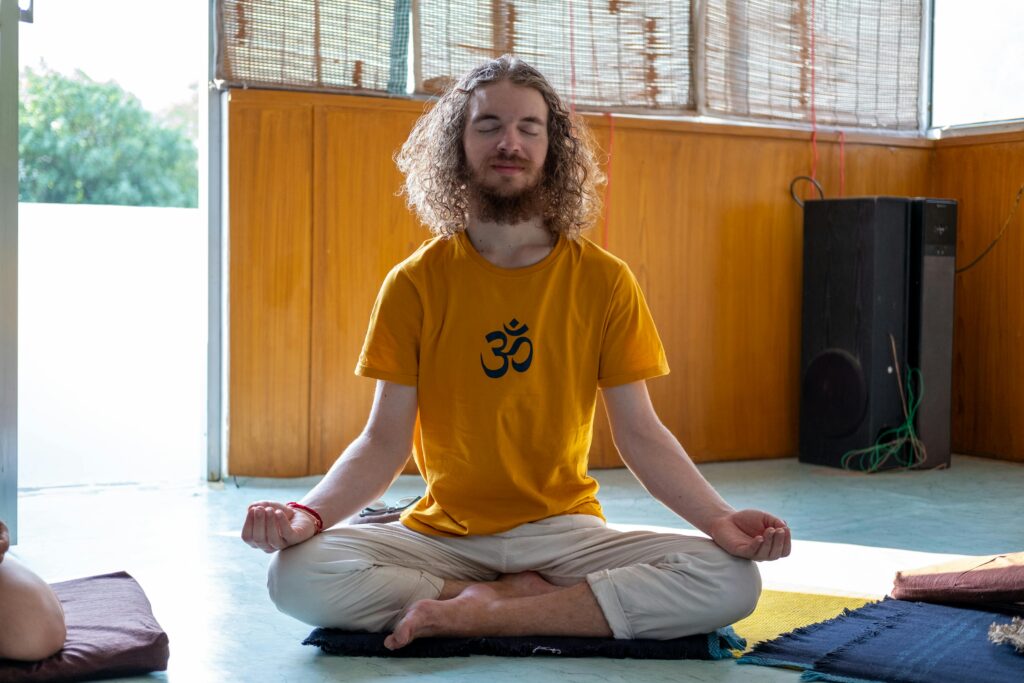Yoga and Meditation: Ancient Practices Rooted in India's Spiritual Heritage






Yoga and meditation are timeless practices that trace their origins to the sacred soil of India, offering pathways to physical, mental, and spiritual well-being. Deeply interwoven with Indian culture, philosophy, and spirituality, these ancient disciplines have transcended geographical and cultural boundaries to become global phenomena. Their rich history, rooted in centuries of tradition, speaks of profound wisdom and universal truths that continue to inspire humanity.
The Historical Roots of Yoga
Yoga’s history spans thousands of years, originating in the Indian subcontinent. The word “yoga” is derived from the Sanskrit root “Yuj,” which means “to unite” or “to join.” It signifies the union of the individual self (Atman) with the universal consciousness (Brahman). The earliest references to yoga are found in the Rigveda, one of the oldest sacred texts, composed around 1500 BCE. Although these references are cryptic, they lay the foundation for the philosophical and spiritual practices that would later develop into yoga.
The classical systematization of yoga can be attributed to Patanjali, a sage who is believed to have lived around 200 BCE to 200 CE. His monumental work, the Yoga Sutras, serves as the cornerstone of yoga philosophy. In this text, Patanjali outlines the Eightfold Path of Yoga, also known as Ashtanga Yoga, which includes:
- Yamas (Ethical disciplines) – Non-violence, truthfulness, non-stealing, self-control, and non-possessiveness.
- Niyamas (Personal observances) – Purity, contentment, discipline, self-study, and surrender to a higher power.
- Asanas (Physical postures) – Exercises designed to prepare the body for meditation.
- Pranayama (Breath control) – Techniques to regulate energy through controlled breathing.
- Pratyahara (Withdrawal of senses) – Turning the senses inward to achieve focus.
- Dharana (Concentration) – Fixing the mind on a single point.
- Dhyana (Meditation) – Deep contemplation and mindfulness.
- Samadhi (Union) – A state of blissful awareness and oneness with the universe.
Meditation: A Journey Inward
Meditation, often referred to as Dhyana in Sanskrit, is a key component of yoga and an ancient practice in its own right. It finds mention in early Vedic texts and later in Upanishads, which delve deeply into the nature of self and consciousness. Meditation was seen as a tool to transcend the limitations of the mind, attain self-realization, and merge with the universal spirit.
The Buddhist and Jain traditions also played significant roles in developing meditation practices. Buddha’s teachings, particularly on mindfulness and Vipassana, emphasize the observation of thoughts, feelings, and sensations to cultivate awareness and detachment. Jain meditation, or Samayika, focuses on self-purification and non-attachment. These traditions, alongside Hindu practices, enriched the evolution of meditation techniques in India.
Yoga and Meditation in Classical India
During the Gupta period (4th to 6th centuries CE), often referred to as the “Golden Age” of India, yoga and meditation flourished. Texts such as the Bhagavad Gita and the Hatha Yoga Pradipika provided comprehensive insights into these disciplines. The Gita, part of the Mahabharata, emphasizes Karma Yoga (Path of Action), Bhakti Yoga (Path of Devotion), and Jnana Yoga (Path of Knowledge) as ways to achieve spiritual liberation.
The Hatha Yoga Pradipika, compiled by Swami Swatmarama in the 15th century, marked the transition of yoga from a primarily spiritual practice to one incorporating physical exercises and postures. It detailed techniques to harmonize the body, mind, and breath, laying the groundwork for modern yoga.
Yoga and Meditation in Modern India:
With the advent of British colonial rule, the spiritual essence of yoga and meditation faced challenges but also found new avenues for dissemination. Visionaries such as Swami Vivekananda brought Indian spirituality to the global stage. At the 1893 Parliament of the World’s Religions in Chicago, Vivekananda’s exposition of yoga and meditation captured global attention.
In the 20th century, luminaries such as Paramahansa Yogananda, Sri Aurobindo, and Maharishi Mahesh Yogi further popularized these practices. Yogananda’s book, Autobiography of a Yogi, introduced millions to the transformative power of yoga and meditation, while Maharishi Mahesh Yogi’s Transcendental Meditation (TM) gained international recognition for its simplicity and efficacy.
In contemporary times, yoga and meditation are celebrated globally for their health benefits. The United Nations’ declaration of International Yoga Day on June 21st underscores India’s pivotal role in sharing these practices with the world. Scientific research has validated their impact on reducing stress, improving focus, enhancing physical fitness, and promoting mental well-being.
India remains the epicenter of yoga and meditation, attracting seekers from around the world to ashrams and retreats in Rishikesh, Varanasi, and Kerala. These practices, while ancient, continue to evolve, adapting to the needs of modern society while staying true to their timeless essence.
Yoga and meditation are profound gifts from India to the world, rooted in a history that spans millennia. They serve as bridges between the physical and spiritual realms, offering tools for self-discovery and inner peace. By embracing these ancient practices, humanity not only honors India’s rich heritage but also takes a step toward a more harmonious and balanced existence.

